While it’s never Dr. Lively’s first choice, sometimes the best course of action he can take to protect and preserve a person’s oral health is to remove a tooth. This is often the case when severe dental damage or decay is present. He understands that this procedure can make a lot of patients feel nervous, which is why he always takes the time to answer questions beforehand. If necessary, he can also quickly replace the tooth to minimize any time spent with an incomplete smile.
Tooth Extractions – Mangum, OK
Skilled & Pain-Free Tooth Removal
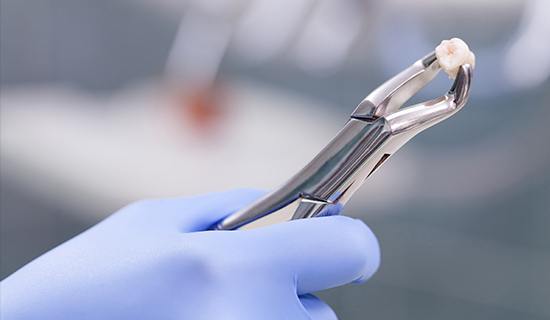
Why Choose Us for Extractions?
- Some wisdom tooth extractions performed in-house
- Hometown dentist with 20+ years of experience
Why You Might Need a Tooth Extraction
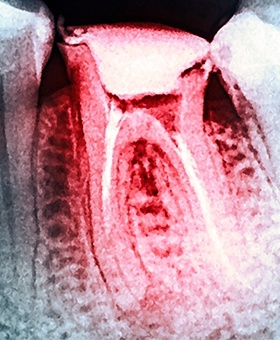
- One of your teeth has a cavity too large to be restored with a filling or crown
- The tooth has experienced so much trauma that it cannot be put back together
- An advanced infection has damaged the bone needed to support a tooth
- More room is needed in the mouth to help a new denture fit properly
What to Expect During Tooth Extraction
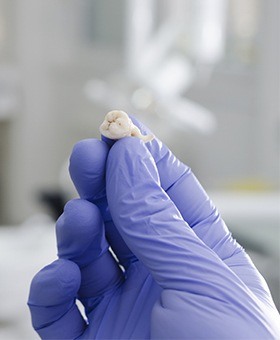
Dr. Lively can provide two different types of extractions:
- Non-surgical: This is used when a tooth has fully or mostly erupted into the gum line. Dr. Lively will simply numb the tooth and rock it back and forth until it slips out on its own.
- Surgical: If a tooth is still stuck within the gums (which is often the case with wisdom teeth), Dr. Lively will numb the treatment area and then eliminate any gum/bone tissue that is covering the tooth. They’ll then remove the tooth and close the treatment site using self-dissolving sutures.
What to Expect After an Extraction
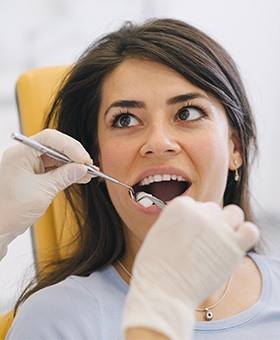
A little soreness in the mouth is normal after an extraction, but this should go away after a few days. A patient will be instructed to avoid drinking with a straw, spitting, and being physically active for the first 24 hours, as this can interfere with the blood clotting in the area, which is essential for proper healing. We’ll also recommend that they stick to a soft food diet initially. After about a week or so, a patient’s mouth should feel completely normal, and they will be able to resume their regular diet and activities.
Understanding the Cost of Tooth Extractions
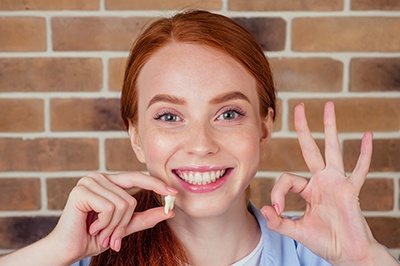
The exact cost of your tooth extraction treatment isn’t a one-size-fits-all price. There are several factors that are used to determine the cost, including the location of the tooth and whether it is a simple or surgical extraction. The best way to get the most accurate price is to schedule a consultation with 333 Dental Care and let Dr. Lively examine the tooth or teeth in person. Only then can he give you the most accurate total. In the meantime, feel free to read more about how we calculate your price and how we can help make it more affordable for you.
Factors That Can Affect Tooth Extraction Cost
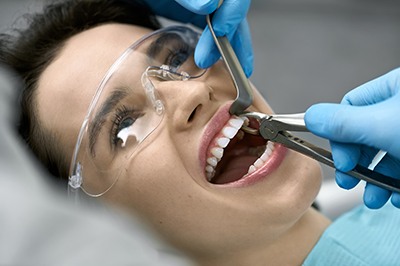
It’s extremely difficult to give you the exact cost of a tooth extraction until Dr. Lively has had the opportunity to examine the tooth or teeth in question. There are several important factors that may influence the final amount, including:
- The type and location of the tooth, and how many teeth need to be extracted.
- The overall difficulty of the extraction, and whether a specialist will be needed to assist with the procedure. Simple extractions and impacted extractions are very different.
- What the next steps for replacing your tooth might look like, such as if you need a dental implant, bridge, or dentures.
Does Dental Insurance Cover Tooth Extractions?

It’s very common for many dental insurance plans to cover around 50% of the cost of a tooth extraction, after your deductible has been met. This includes wisdom teeth. However, be aware that there may be limits in place in your plan that only cover a certain number of teeth, or a waiting period before your dental insurance coverage kicks in. Every plan is different, which is why it’s essential to confirm your coverage with your insurance company first. At 333 Dental Care, our team is happy to assist you with this process.
Other Options for Making Tooth Extractions Affordable

In addition to being in-network with many popular dental insurance plans, at 333 Dental Care, we are also proud to offer the following options to make your tooth extraction treatment more affordable:
- CareCredit: This third-party financier can help you by breaking up your treatment cost into multiple, low-to-no interest monthly payments. You can apply for CareCredit through our website, or call our office for more information.
At 333 Dental Care, we’re ready to restore your smile and help with your tooth extraction procedure. We’re here to assist you with navigating the cost, so if you have any questions or concerns please don’t hesitate to contact our friendly office and we’ll be glad to help!
Tooth Extractions FAQs
Is There an Alternative Treatment for Tooth Extractions?
Many patients feel anxious when they learn that they need to have a troublesome tooth extracted, and it’s only natural to wonder whether there are any alternative ways to treat the root concern.
Although Dr. Lively typically does everything she can to protect and preserve your natural teeth, if she has recommended this service, then it’s likely because she has already determined that it’s the only feasible option. For instance, it might be the only way to stop decay from spreading from a tooth that’s so severely damaged or diseased that it can’t be fixed with a filling or a root canal and dental crown.
Does Getting a Tooth Extracted Hurt?
Another common question on many patients’ minds is whether their tooth extraction will hurt, and if so, to what extent. Fortunately, Dr. Lively and the rest of our team in Mangum understand that you might be anxious and will do everything we can to help you feel calm and comfortable.
For example, we’ll apply a local anesthetic to the area before starting your procedure to numb the tissues and prevent your nerves from sending pain signals to your brain. This reduces sensation so that you might feel pressure while we work, but not outright discomfort. That means you likely won’t have to worry about potential aches until the medication wears off following your treatment.
Then, it’s normal to feel tender for several days, but if you have severe or persistent pain, please let us know so we can ensure that you are recovering as intended.
Can I Leave the Socket Empty After My Procedure?
You might feel tempted to leave the space empty once your damaged tooth is removed, especially if it is located in the back of your mouth, where no one is likely to see it. However, your remaining teeth are likely to shift out of place to fill in the gap, which can erode your enamel unevenly or prematurely. This can increase the risk of developing cavities or other injuries.
As a result, we usually recommend replacing your missing tooth as soon as possible. Our team is happy to provide appropriate treatment suggestions based on your unique circumstances.
What Are the Options for Replacing My Extracted Tooth?
Are you wondering what options there are for replacing your recently removed tooth? Our dedicated team in Mangum offers two types of restorations to close the space in your smile, and they are:
- This is the tried-and-true solution or rebuilding grins after tooth loss and consists of a gum-colored acrylic base set with the correct number of pontics (artificial teeth) to complete your arches, regardless of how many natural teeth you have remaining.
- Dental bridges. These restorations are ideal for replacing one to four missing teeth in a row. They contain the correct number of pontics between two dental crowns that anchor either to healthy teeth or implants on either side of the gap in your grin.

